Along the Pacific Northwest Coast, herring spawn each Spring on water plants such as kelp or eelgrass. Some First Nations, including the Nuu-chah-nulth, harvest herring roe on hemlock branches, which offers a slight tannin flavour to the roe. My favourite way of enjoying this special food is roe spawned on giant kelp which is more common with my Ts’msyen family. This recipe has an Asian-twist, thanks to my mother.
Health
Protein
We love protein for building strength and immunity, as well as for its ability to help us feel more full and to stabilize blood sugar levels. Per 100 grams of herring roe on kelp, there is around 11 grams of protein (1).
Omega-3 Fatty Acids
Omega-3 fatty acids are well recognized by conventional science for their beneficial role in heart health, combating inflammation, and for supporting brain health (especially in the fetus and in young children). The total fat content of herring roe on kelp is 0.8 grams (per 100 gram in weight), compared to 6.6 grams of dried herring roe, or 10.6 grams in herring meat. Despite the low fat content, herring roe is a good source of EPA and DHA (1).
Cultural Wellness
Herring roe was once a staple food source for many coastal First Nations, abundant at feasts or potlatches. Due to the impacts of colonialism, including the loss of land, climate change and racist government policies, herring roe is no longer as available as it once was. Herring roe is not only nourishing for our physical bodies, the act of harvesting and processing it, just as with any traditional food, carries immeasurable cultural benefits.
Preparation
Method 1 – Soak The Herring Roe
Herring roe is generally packed in brine or has come straight from the salt water, so it can be very salty. If the roe has been packed in brine, depending on how thick the roe is, it may need to be soaked for anywhere from 2 hours to 6 hours. Community members have recommended the water be changed at least once during the soaking period. I have found this necessary when the roe is at least 1-inch thick. Taste a small bit of the soaking roe to check its saltiness during the soaking period.
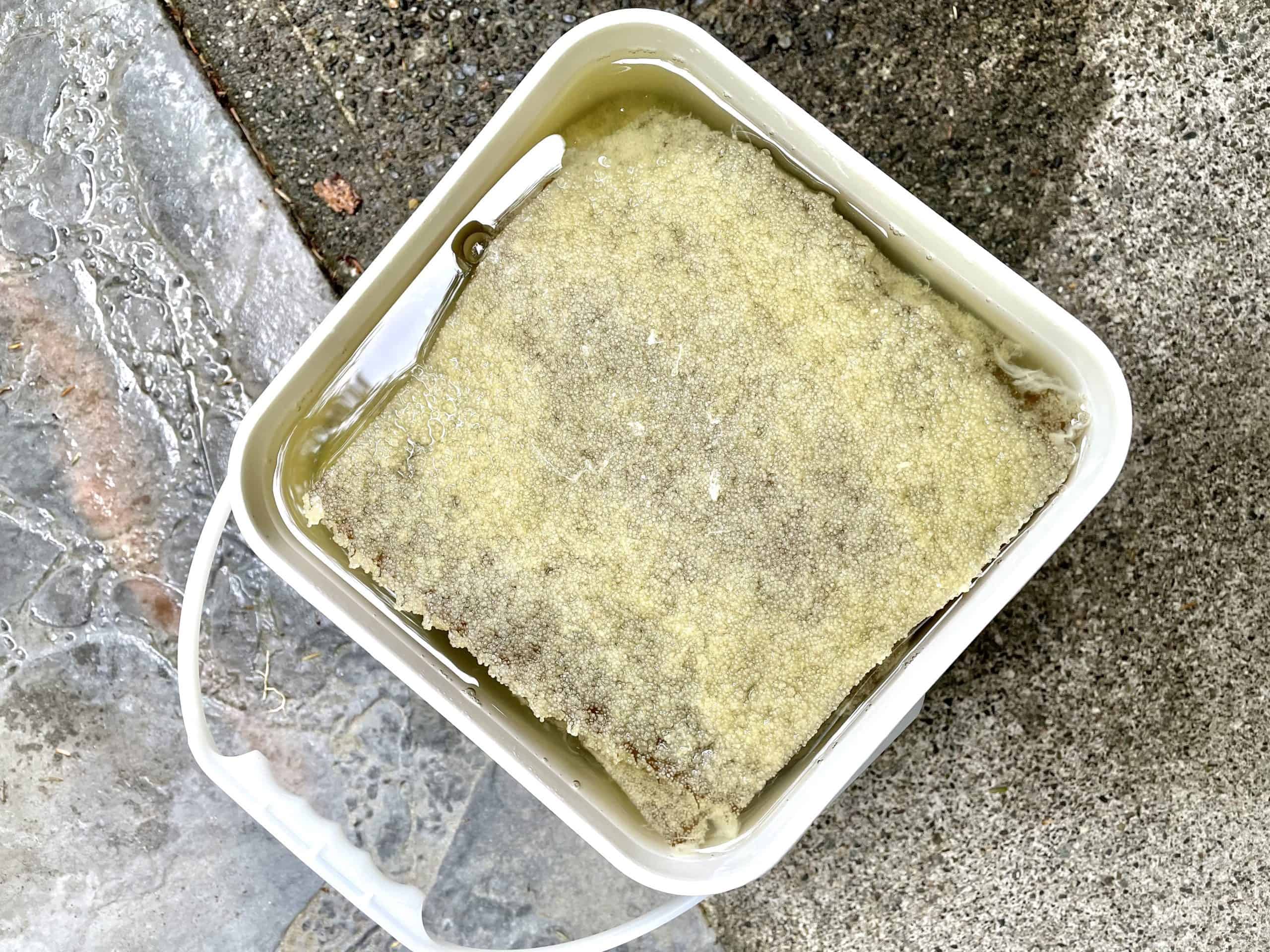
The herring roe can come soaking in brine to preserve it and keep it fresh.
Method 2 – Run The Roe Under Running Water
My grandmother places the roe in a deep bowl and runs it under cold water for about 10 minutes. Again, taste a small piece of the uncooked roe to see how salty it is. This works best for roe that is 1/2-inch or less in thickness.
Storing Extra Roe
If you have some roe you want to freeze for another time, freeze the unsoaked roe in large ziplock bags. If the roe has come already soaking in a brine solution, add some of this brine liquid into the freezer bags with the roe. This will help keep the roe fresh and prevent freezer burn. The roe will be good for 1 year if stored properly.
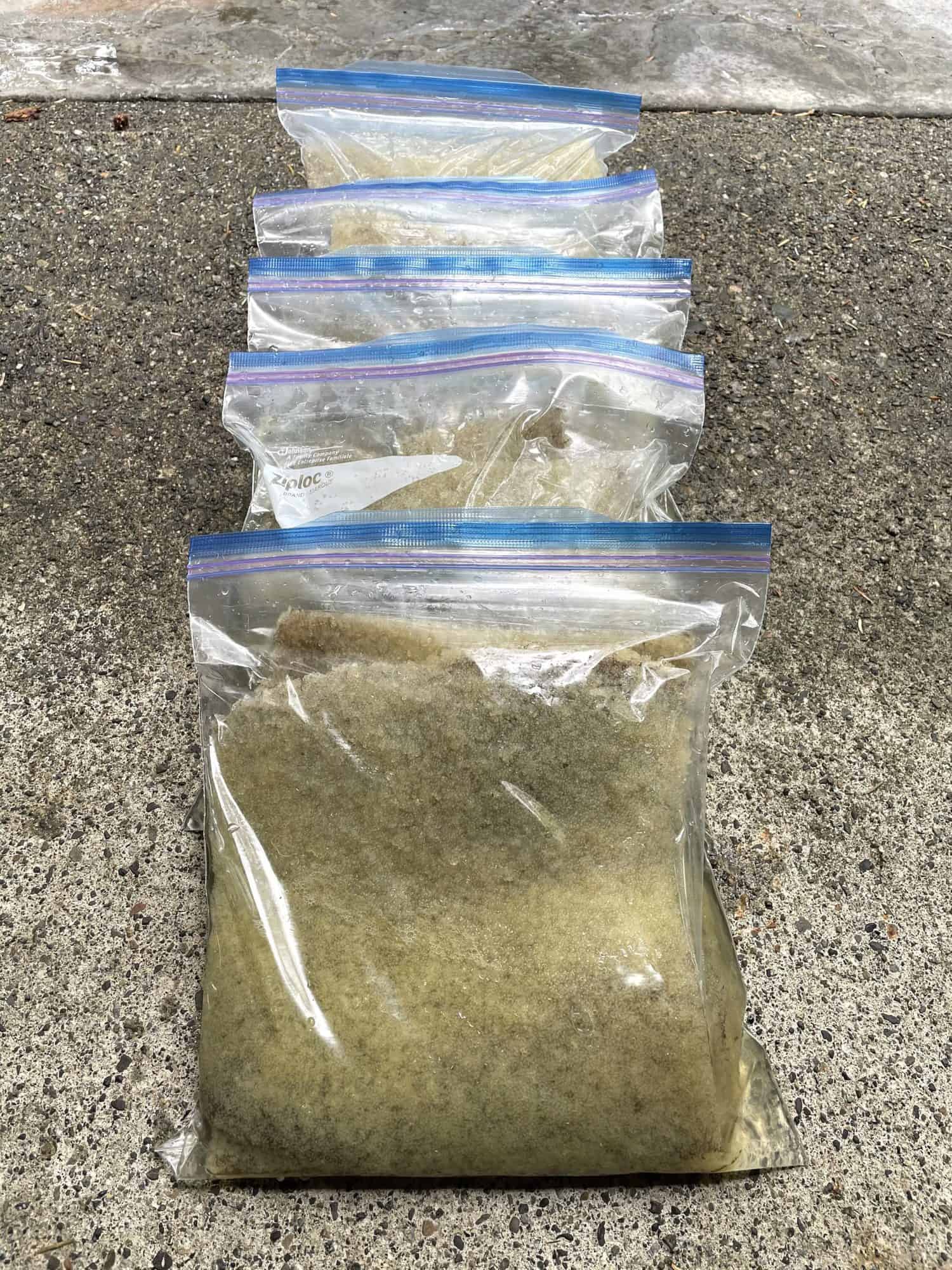
Freeze the herring roe in ziplock freezer bags with brine in the bags.
How To Make Fried Herring Roe with Soy Sauce
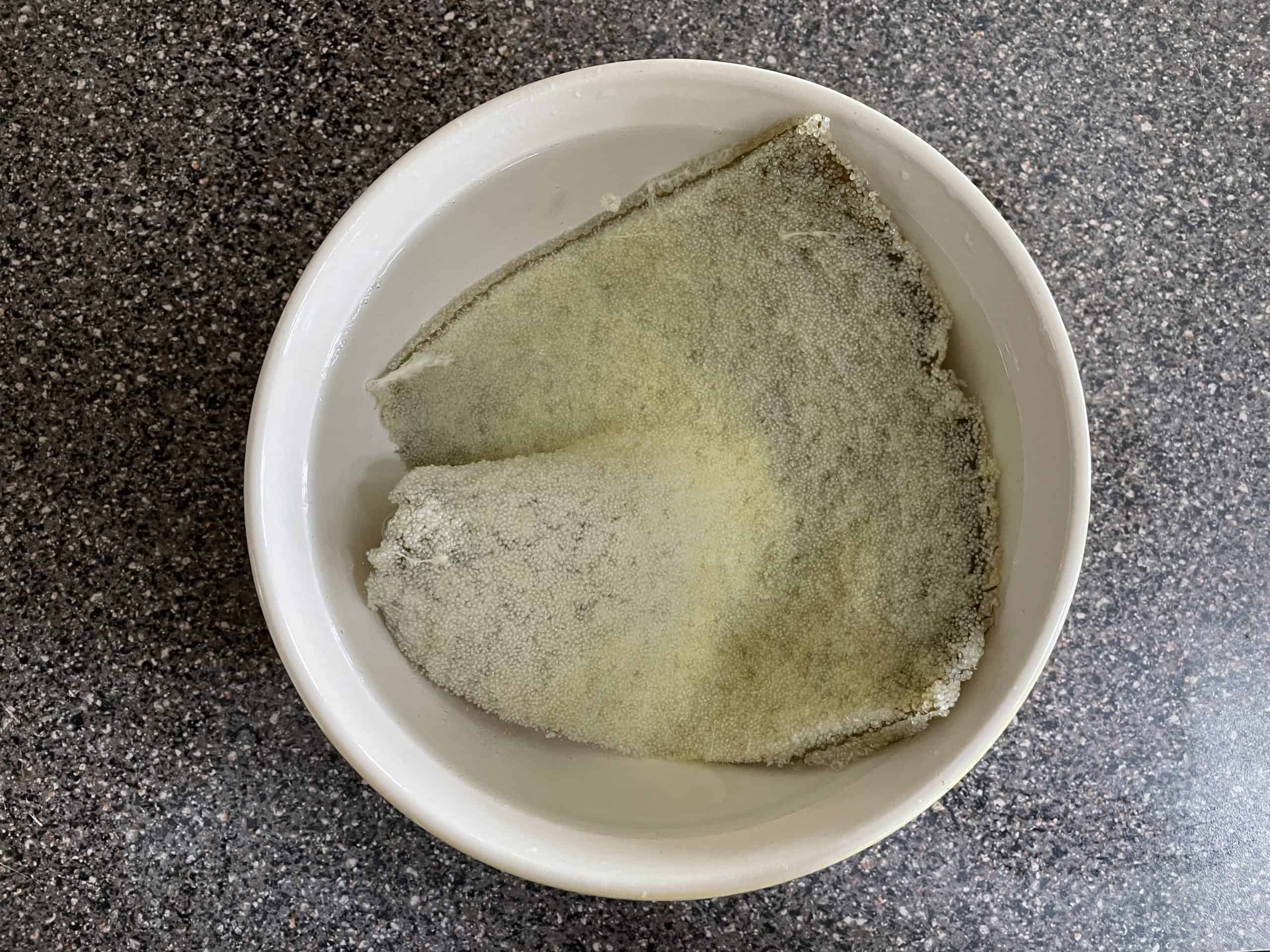
Soak the roe in water, changing the water once during the soaking process.
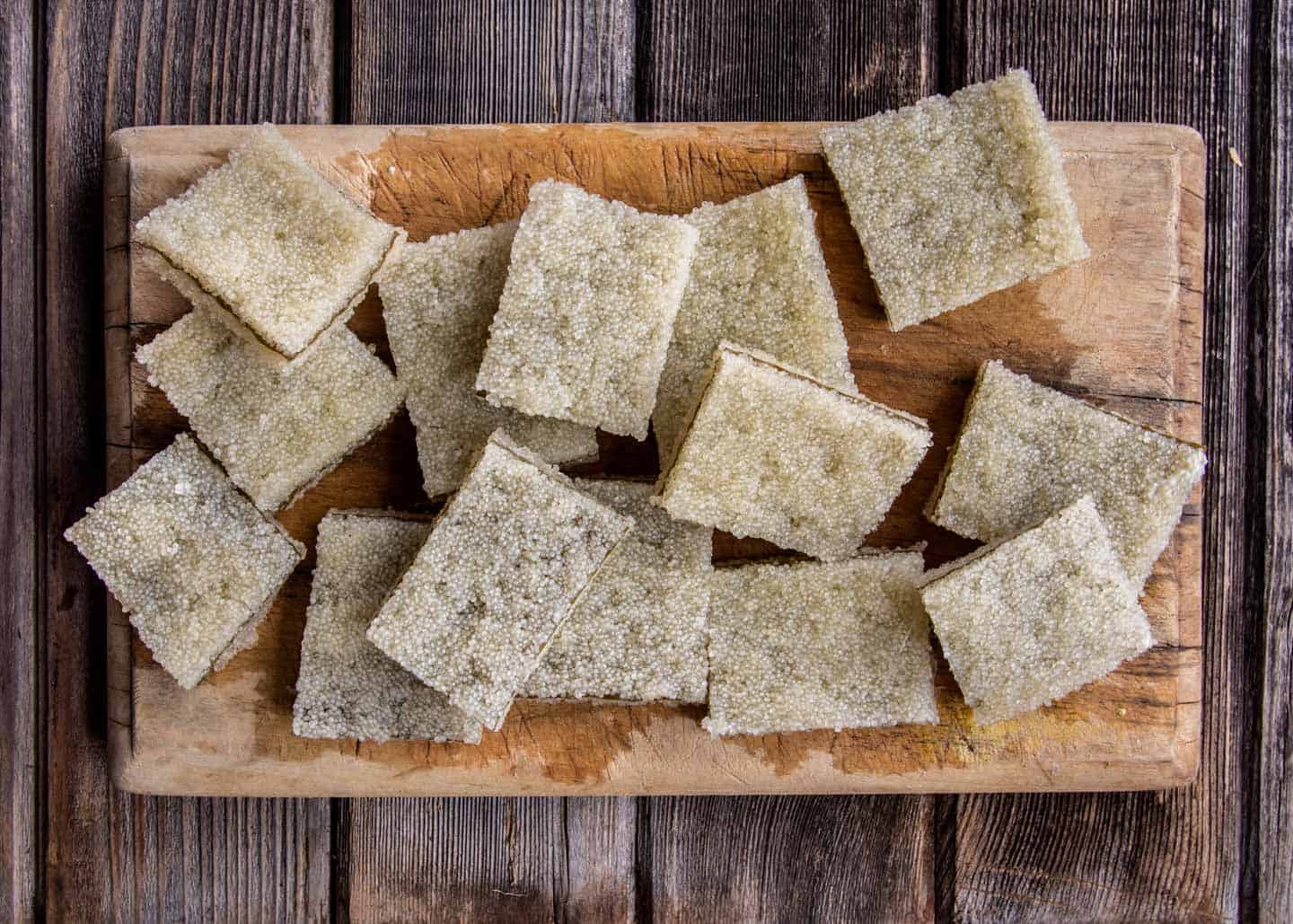
Cut the herring roe into 1 to 2-inch pieces.
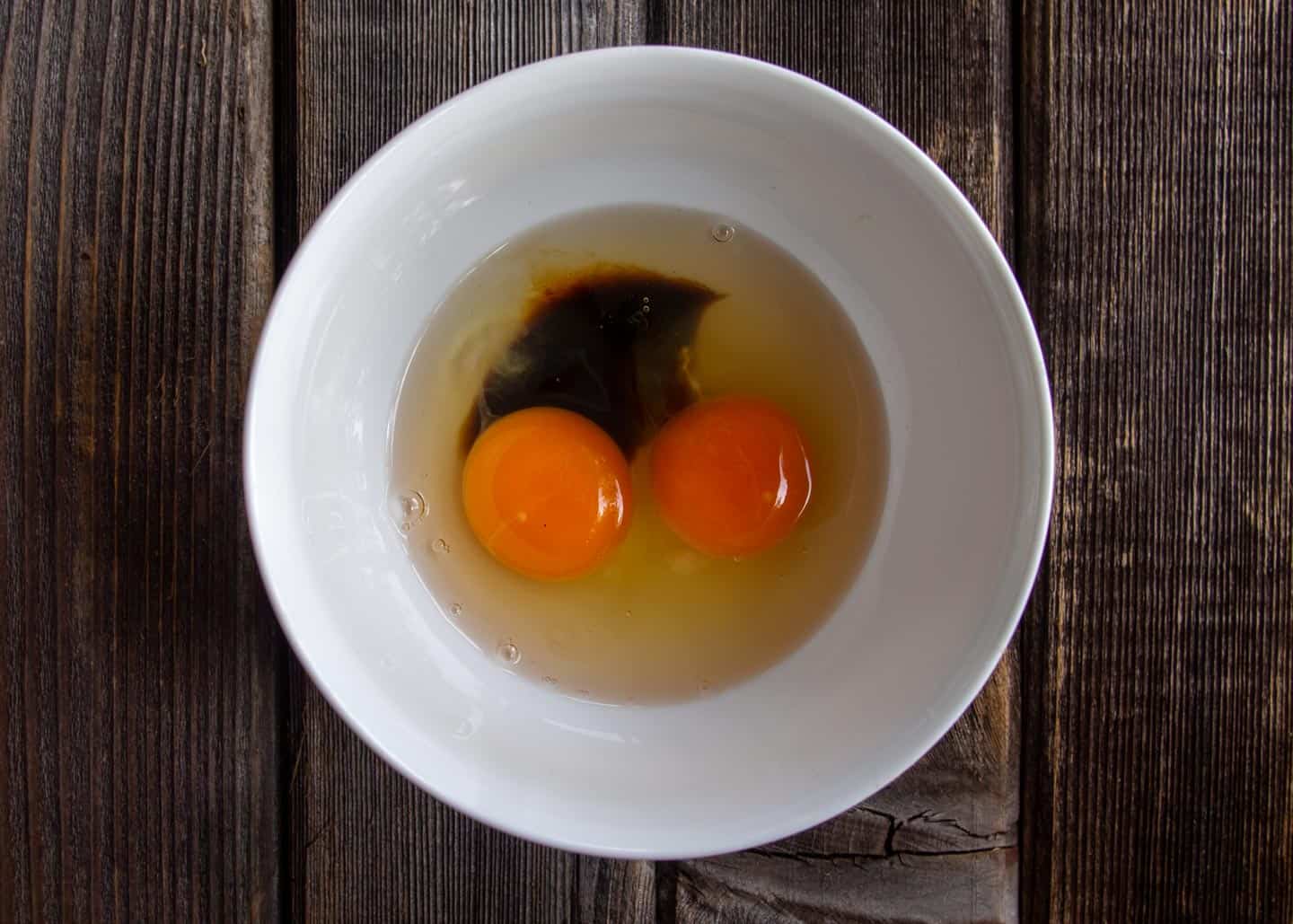
Crack eggs into a bowl, add soy sauce.
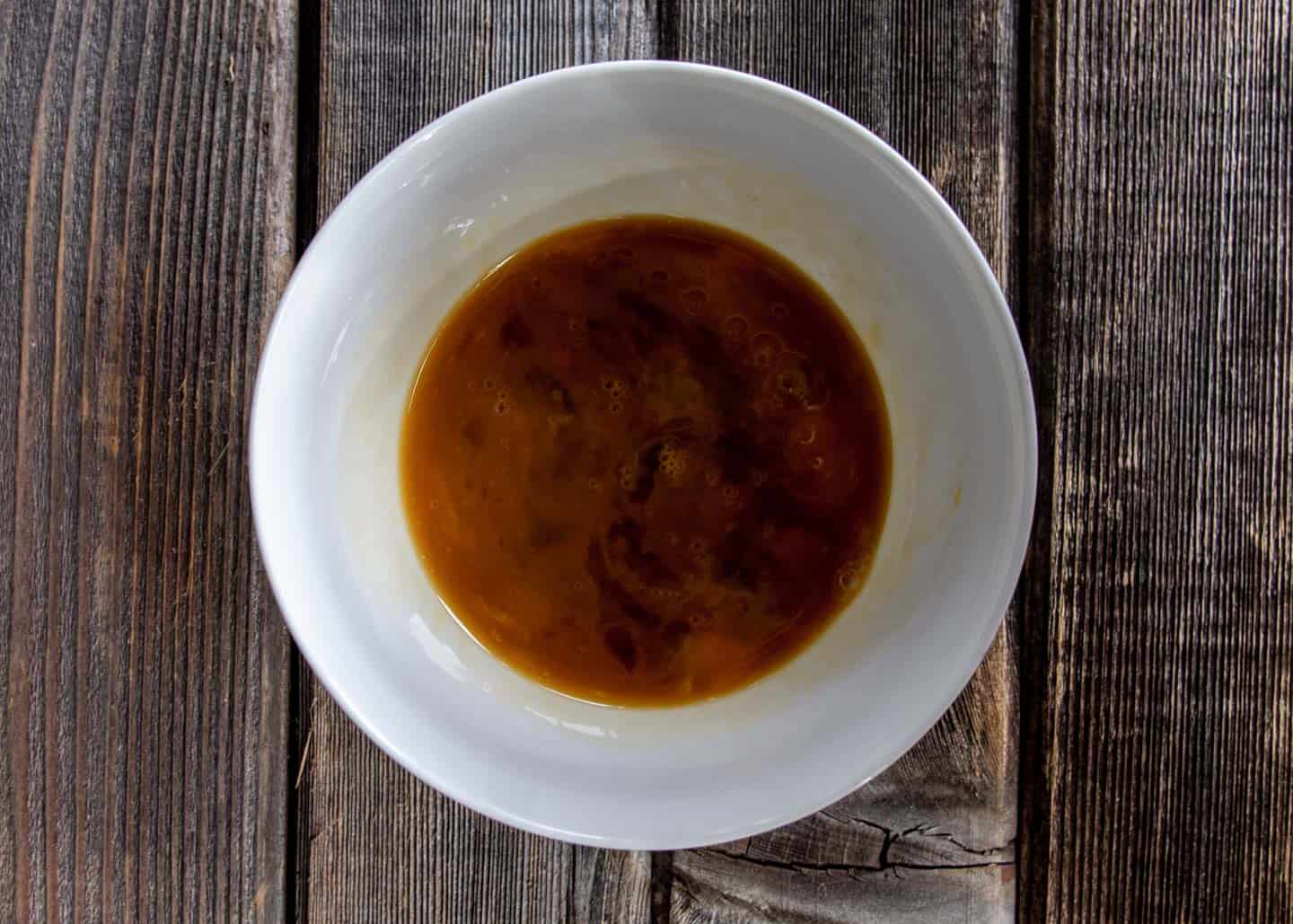
Whisk the eggs and soy sauce together.
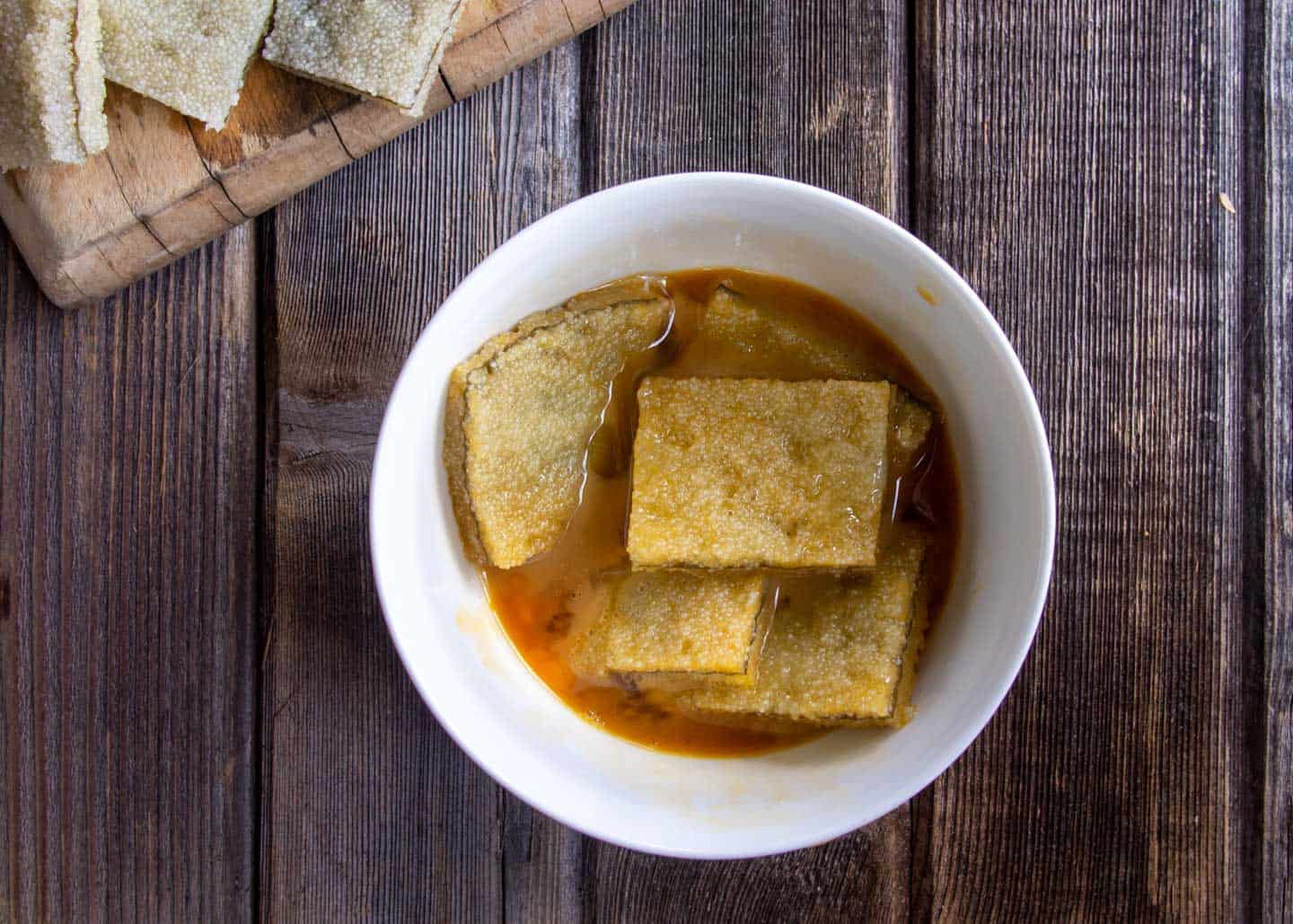
Dip the pieces of herring roe on kelp into the egg and soy sauce mixture.
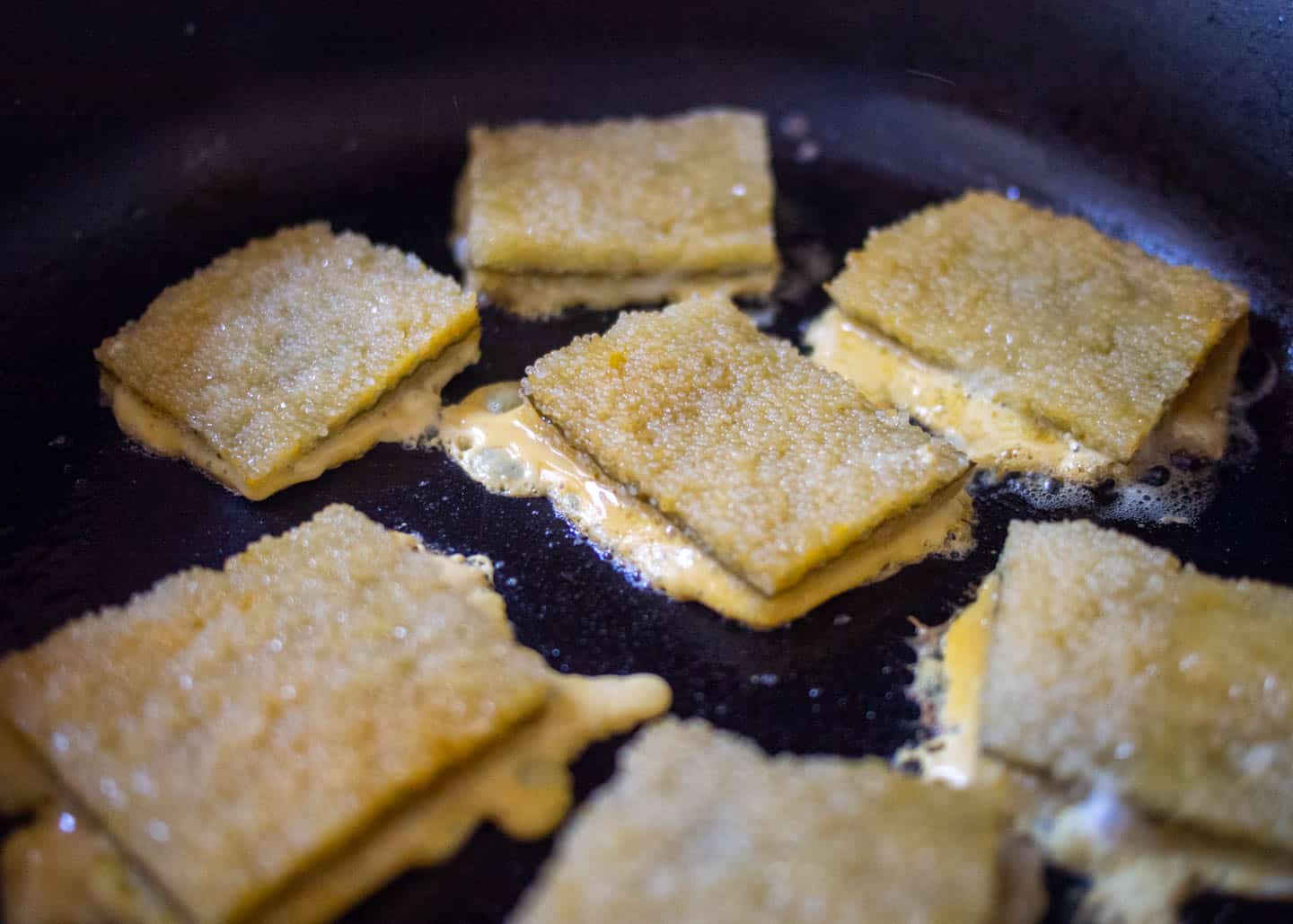
Heat a frying pan to medium-high heat and add oil. Add pieces of roe dipped in egg soy sauce mixture. Fry for 2 to 3 minutes.
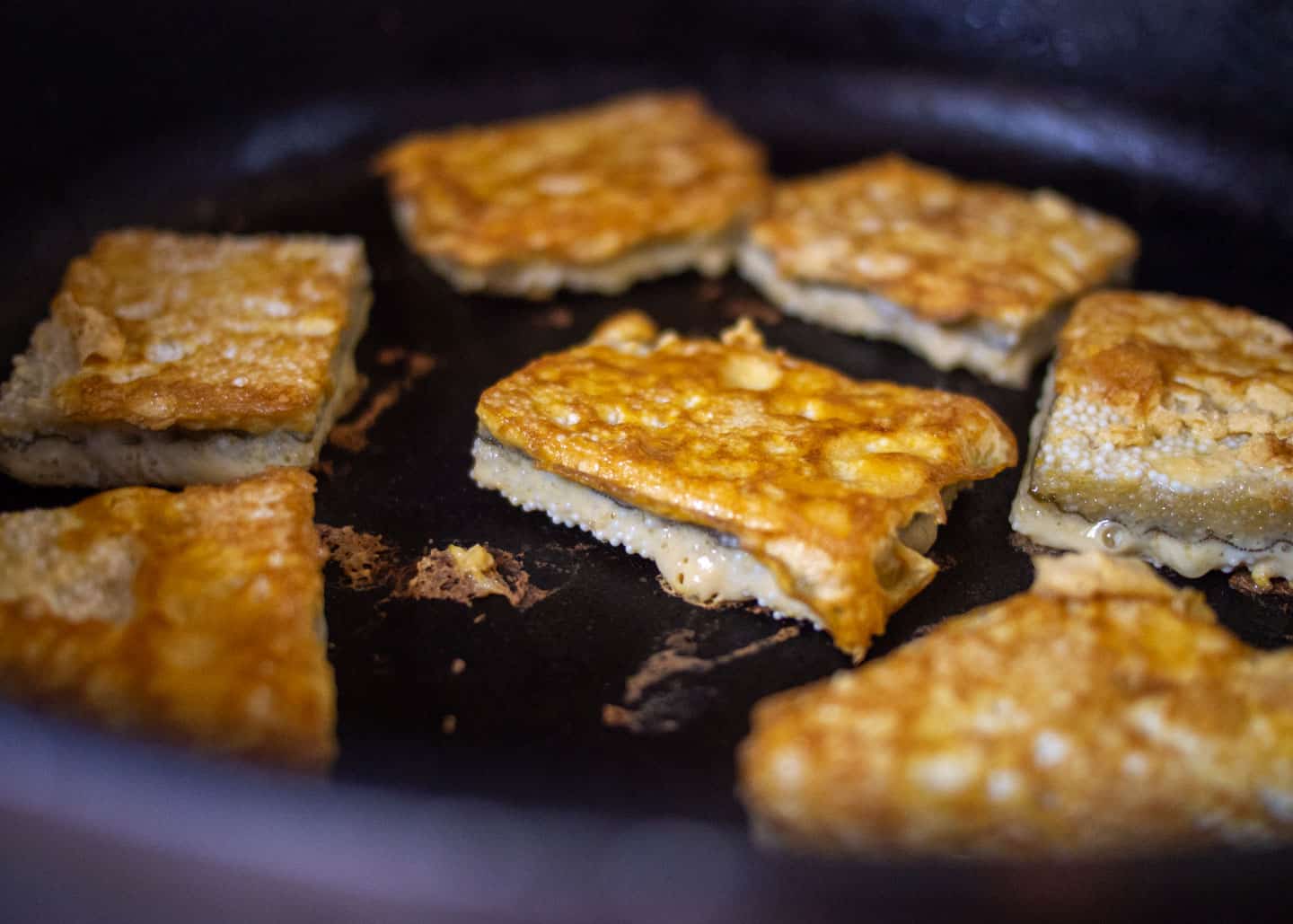
Flip the herring roe over and cook for an additional 1 to 2 minutes. Check that the roe is cooked through, it should be white. You can see in the photo some of the roe is still translucent and is not fully cooked.
How To Serve Herring Roe On Kelp
- Have it just as it is
- Dip it in soy sauce
- Add it to a stir-fry
- Cut it into strips and roll it into sushi
- Enjoy it on a salad
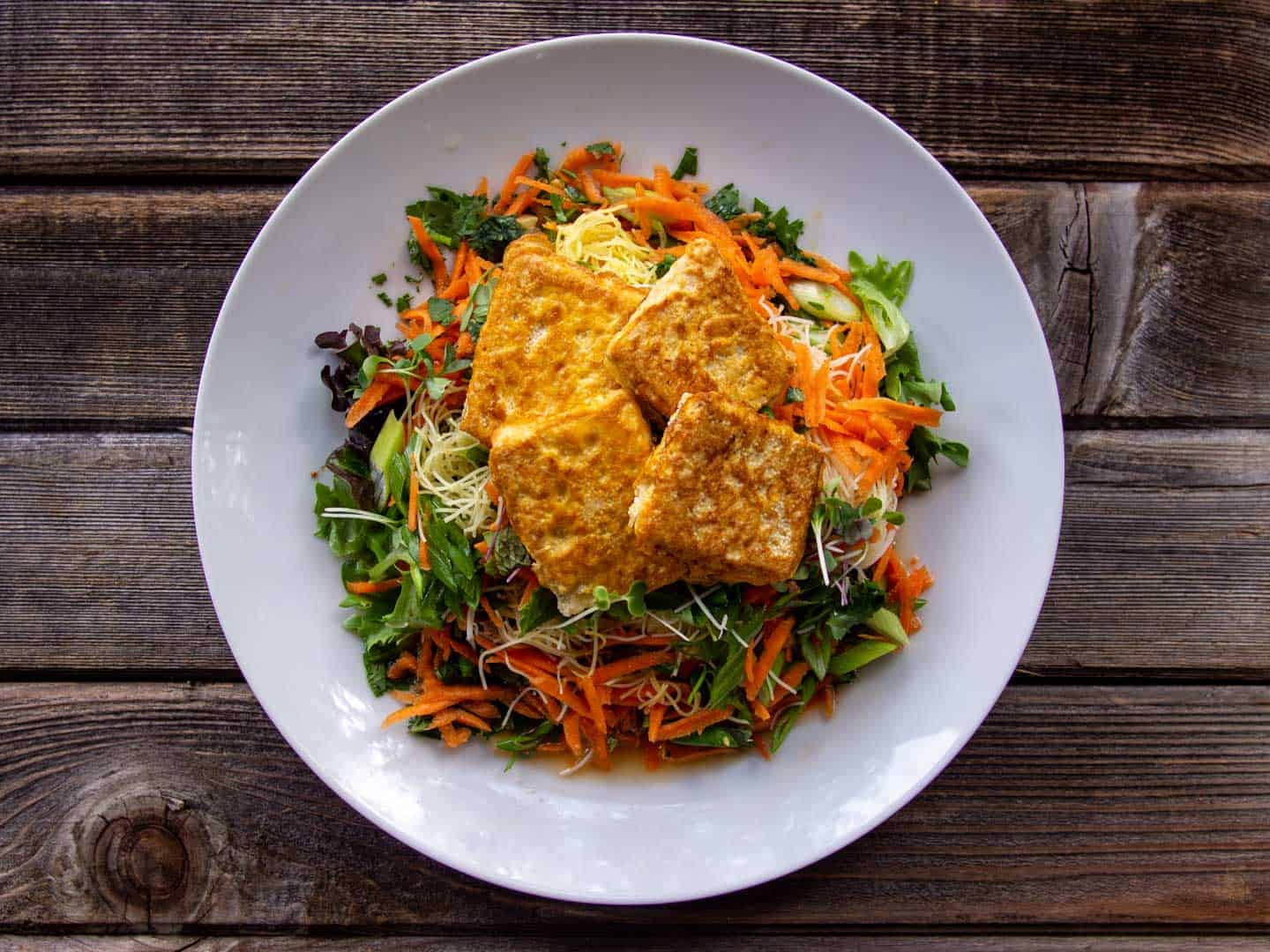
Herring roe on kelp on top of Vietnamese-inspired salad.
More Indigenous Foods
- Healthy Oat and Cranberry Crisp
- Two-Ingredient Corn Patties
- Cornmeal Patties with Wild Rice
- Chia Pudding with Wild Rice, Maple Syrup and Hazelnuts
Fried Herring Roe On Kelp with Soy Sauce
Ingredients
- 2 cups herring roe on kelp cut into 1-2" pieces
- 1-2 eggs
- 1-2 tsp soy sauce
- 1 tbsp olive oil
Instructions
- Run it under cold water to remove the salty brine. You can keep tasting the roe to see if it is too salty. Alternatively, you can soak it for about 2-4 hours, changing the water once. The thicker the roe on the kelp, the longer you will need to soak it.
- Cut the herring roe into 1 to 2-inch pieces. Set aside.
- Whisk the egg with the soy sauce. Start with less soy sauce to start so it is not too salty.
- Heat a frying pan over medium-high heat. Add the oil and let the oil heat. Dip the herring roe pieces into the egg mixture and then add to the frying pan in a single layer. You may need to do 2-3 batches. Cook for about 2-3 minutes.
- Flip the roe over and cook for an additional 1-2 minutes on the other side. Check to see that the roe is cooked through - the roe should turn white and not be translucent. Serve with more soy sauce on the side.
Notes
Option 1 - Soak The Herring Roe
As the roe is generally packed in brine or has come straight from the saltwater it can be very salty. Depending on how thick the roe is, it may need to be soaked for anywhere from 2 hours to 6 hours. Some recommend the water be changed at least once during the soaking period. I have found this necessary when the roe is at least 1-inch thick. Taste a small bit of the soaking roe to check its saltiness during the soaking period.Option 2 - Run The Roe Under Running Water
Place the roe in a deep bowl and run it under cold water for about 10 minutes. Again, taste a small piece of the uncooked roe to see how salty it is. This works best for roe that is 1/2-inch or less in thickness.Storing Extra Roe
Freeze the unsoaked roe in large ziplock bags. If the roe has come already soaking in a brine solution, add some of this brine liquid into the freezer bags with the roe. This will help keep the roe fresh and prevent freezer burn. The roe will be good for 1 year if stored properly.Nutrition
References
- Moss, M. (2019). The Nutritional Value of Pacific Herring: an Ancient Cultural Keystone Species on the Northwest Coast of North America. Department of Anthropology, University of Oregon, Eugene, OR.
- Garibaldi, A. & Turner, N. (2004). Cultural Keystone Species: Implications for Ecological Conservation and Restoration. Ecology and Society
- McGill – Traditional Animal Foods of Indigenous Peoples of Northern North America – Herring
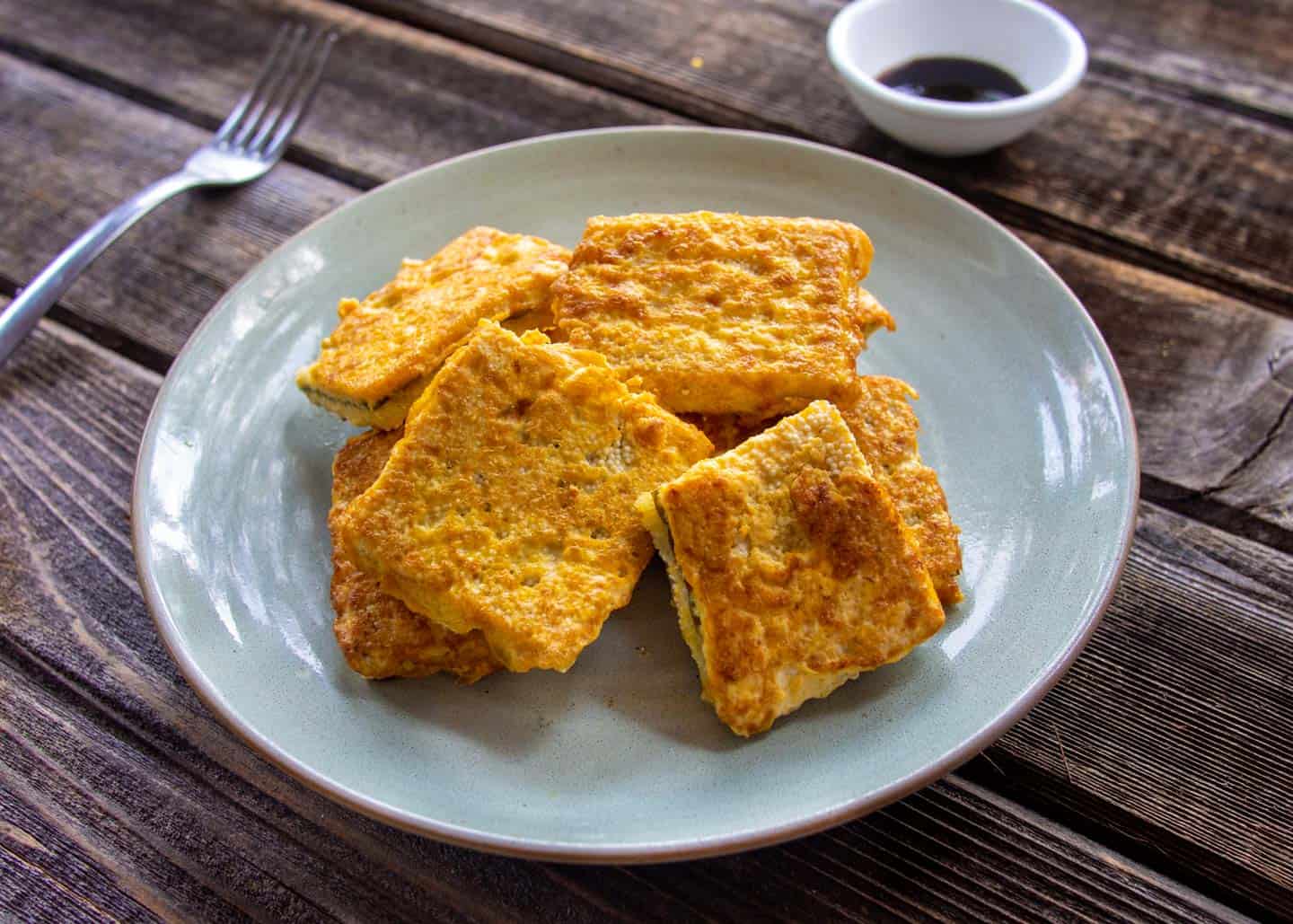
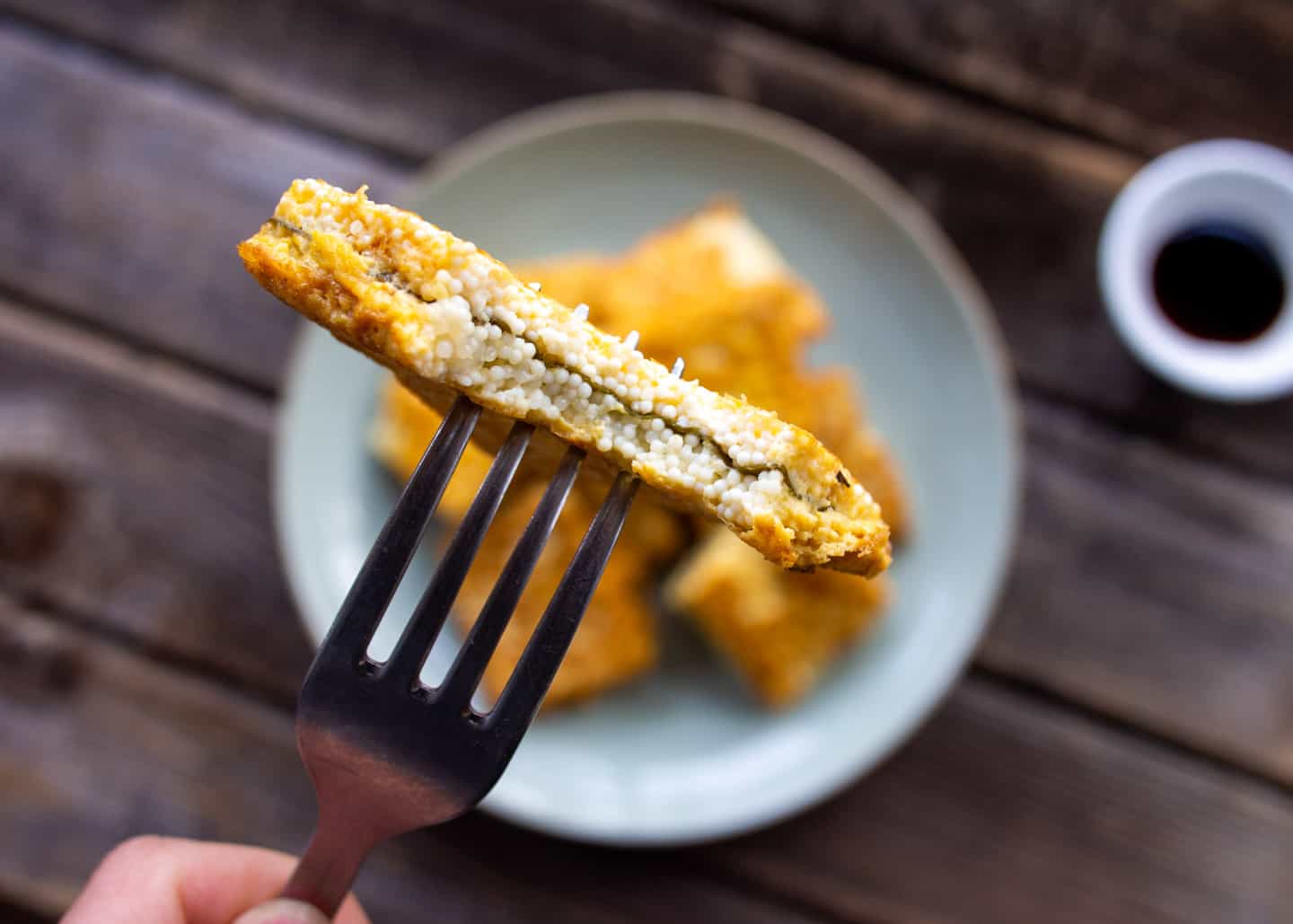
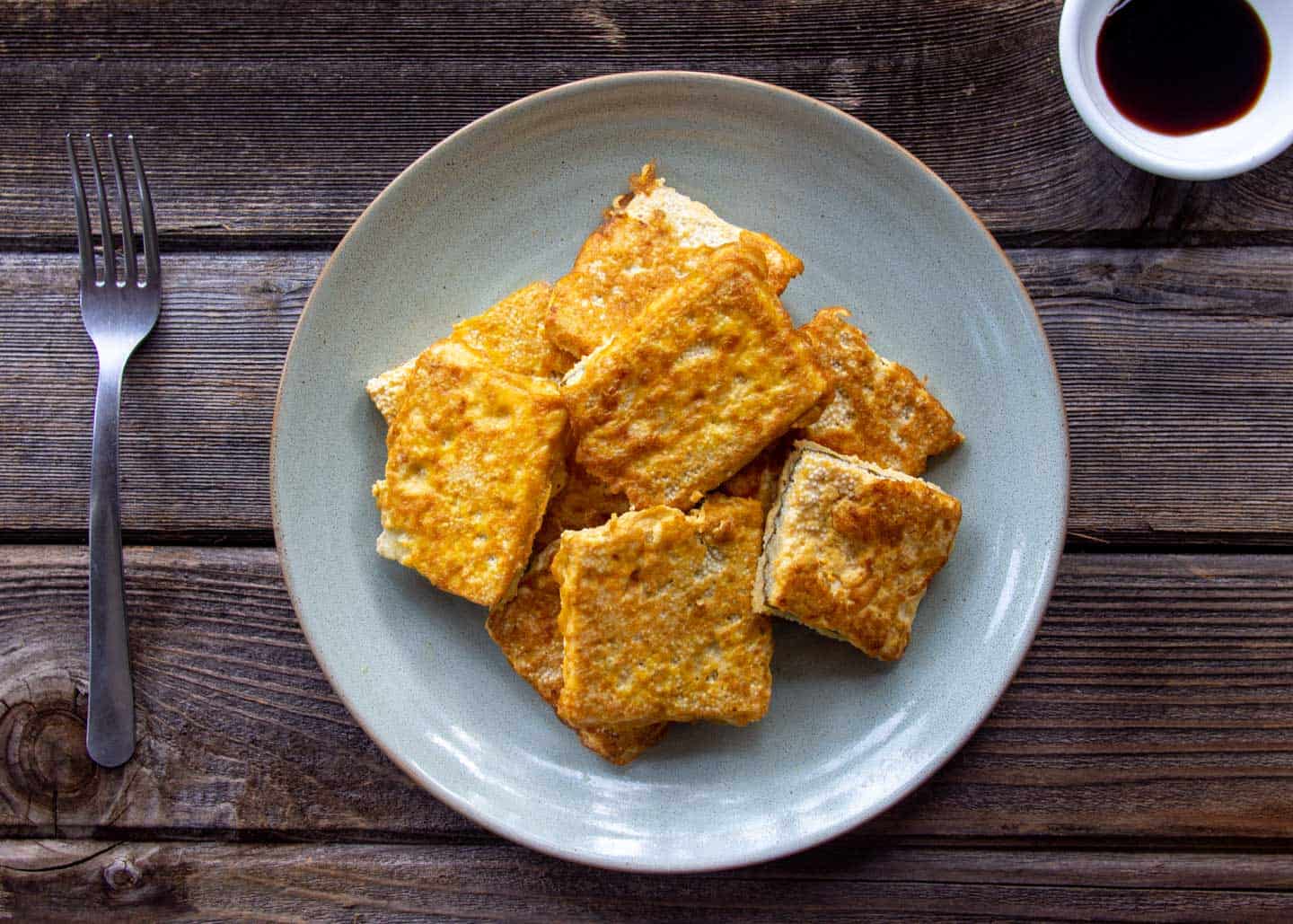
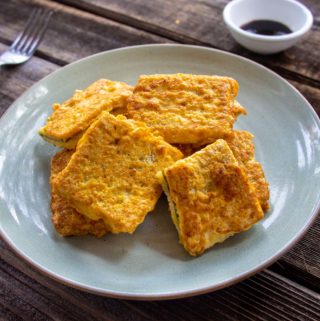
Amazing Post,
I think the size of chicken breasts has changed dramatically since Julia Child’s day, which could account for some of her shorter cook time.
Thanks!